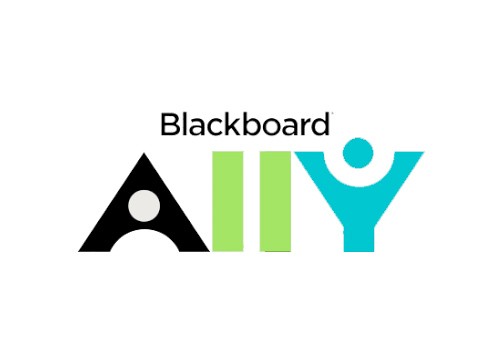Blackboard Ally provides resources to improve accessibility

Courtesy / BlackBoard.com
Oct 22, 2018
Many students may not have noticed the small, grey arrow added next to files in Blackboard over the summer, but for the nearly 1,600 students with documented disabilities on campus, it may make a world of difference. The visibly subtle change comes as part of an additional tool added to Blackboard called Blackboard Ally, which has been increasing the accessibility of files since its first semester with a full student body this fall.
Blackboard Ally is a tool that works in conjunction with Blackboard to analyze files and convert them into a variety of accessible formats to better support students with disabilities, said Associate Director of eLearning and Emerging Technologies Eric Kunnen. Through faculty accounts, the tool also provides educators with resources to view the current accessibility ratings of their materials, as well as tutorials to raise their ratings.
“Blackboard Ally is an accessibility solution to help faculty and students understand and get insight a to the level of accessibility in the content of their courses,” Kunnen said. “Also, as an institution, it gives us insight globally as to how are we doing for an accessibility standpoint across all of our courses from a compliance standpoint. The third piece is providing students with unique ways of accessing content in an alternative format.”
Kunnen said that Ally keeps in mind Web Content Accessibility Guidelines (WCAG) 2.0 AA when creating alternate formats, which is an industry standard. The application also follows the 2021 Strategic Plan which supports utilizing new technology, Blackboard and promoting inclusivity. In meeting all of these requirements, Kunnen also said faculty don’t need to change the way they upload files to Blackboard — Ally passively creates a variety of formats.
“Ally in general is a pretty unique application,” Kunnen said. “On the market, there’s a lot of accessibility checkers for web content, but I’m not familiar with many solutions that check files that are uploaded in a system, scan PDFs, scan Word documents, scan HTML files and look for those accessibility concerns in those files that the user may not know of.”
As of Oct. 20, 2018, Kunnen said that GVSU has nearly 4,000 courses on Blackboard containing roughly 169,000 files uploaded. With Ally in place, about 3,000 alternative format files have been downloaded by students across 800 courses. That number was achieved with little advertising.
eLearning and Instructional Technology Specialist Sherry Barricklow, who has been working with Blackboard at GVSU since its inception, said that before Ally, a lot of the work to create accessible documents fell on the Disability Support Resource Office. While the office still plays a pivotal rule in supporting students with disabilities, Barricklow said that Ally is key in raising awareness for faculty.
“Before we had Ally, the faculty simply didn’t have one comprehensive resource that they could turn to for these types of answers,” Barricklow said. “You could go out on the web and search for seven days to figure out how to do something that maybe didn’t apply to you, where with Ally, the indicators that come along with it tell you what’s wrong with that document.”
Digital Media Developer Hunter Bridwell said that while Ally was adopted primarily to support accessibility awareness, it serves a greater purpose for students who don’t have a documented disability. He said that options to download materials support a variety of learning styles, such as downloading an audio version of a document to go along with reading to increase retention.
“It was built to address certain accessibility needs, but… this idea translates: I use this because it helps me,” Bridwell said. “I can probably get by without it, but I’d rather not. But there are people who need these other formats, so we try to provide that.”
Kunnen said that one issue that Ally faces is notoriety. To battle this, the team has been hosting seminars to teach faculty how to better use Ally, which Bridwell said gets them excited once they know the tool exists.
“By the end of [the seminars], we have a lot of faculty who go, ‘Oh man, I’ve got a lot of work to do,’ and they find that intimidating,” Bridwell said. “Fair enough, I completely understand that. But [they] really start to feel a charge on why that’s important and understanding to serve accessibility in that way is to serve all of your students.”
In looking at the next steps for Ally, Kunnen said that it shouldn’t be seen as a “silver bullet,” but more of a “pathway to inclusion” for faculty. While only one tool, its growing use is encouraging, highlighting GVSU’s efforts toward promoting further inclusion.
“This is a wonderful, phenomenal, very huge first step that our faculty are taking,” Barricklow said. “It’s now OK to ask the question, ‘What else?’ because they know they can take the first step.”


























